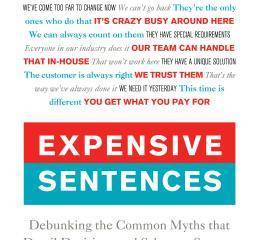A new report from the Lied Center for Real Estate at UNLV blames under-building of new homes in Southern Nevada since the Great Recession for the housing unaffordability the region faces.
The report said extrapolating pre-2003 trends in building activity, it shows that if the pace of construction between 1995 and 2003 stayed on its course, an additional 200,986 housing units could have been built in Southern Nevada between 2014 and 2024.
In terms of housing values, between 1995 and 2003, home prices rose at an average annual rate of 4.1 percent; however, beginning in 2010, prices ultimately began to rise at an average annual rate of 7.5 percent, the report noted.
“The failure to keep up with the pace of building seen in the late ’90s and early 2000s is directly related to Las Vegas’ current affordability issues. Starting in 2010, while the pace of construction fell 64.3 percent, relative to pre-2003, the average rate of home price increases per year rose 82 percent,” the report said.
With the post-COVID rise in home prices across the U.S., affordability issues have been top-of-mind for residents and policymakers alike. The rise in prices is a function of both housing demand and supply but addressing the latter through building can put downward pressure on prices and lead to improved affordability, the report said.
“Relative to the pace of residential construction from 1995 to 2003, the number of housing structures in the Las Vegas area that were permitted post-2010 decreased by 64.3 percent per month; a reduction that was nearly three times as large as the nation’s average reduction of 23.9 percent,” the report said.
The Lied Center details how from 1995 to 2003, Las Vegas approved an average of 2,607 new construction permits per month, second only to the Phoenix area, where there were an average of 3,715 permits issued per month. That was significantly more new housing permits than Denver and Los Angeles despite both having much larger populations than Las Vegas at the time.
Las Vegas also had significantly more new construction than Austin and Salt Lake City, which were of similar size during this period, the report said.
“Fast forwarding to the 2010 to 2025 period, it is quite clear that there has been a major slowdown in the pace of monthly permits issued in the Las Vegas area, where an average of only 932 new homes were permitted each month,” the report said. “This represents a 64.3 percent decrease to the average number of homes built per month during the 1995-2003 period.”
The report detailed how Las Vegas had the biggest percent decline in the most recent period by a substantial margin. Its decline was not only twice as big as the nearest city in Phoenix, but it was also nearly three times larger than the national decline.
That compares to Los Angeles, which increased the rate of newly permitted homes during this period while Austin saw a massive explosion in development over the same period, the report said.
Between 1995 and 2003, on average 24,208 parcels were developed per year while post-2010, this fell to 9,023 parcels per year, representing a 62.7 percent decline between these periods, the report said.
Southern Nevada constructed 39,883 units on average per year pre-2003 in contrast to 14,515 units per year post-2010 representing a 63.6 percent decline.
“This decline means fewer homes are available to the growing Clark County population, which puts upward pressure on home prices,” the report said.
As for where is land being developed in Southern Nevada currently, the report identified 9,178 parcels in the Clark County Assessor files that have a construction year of 2024.
The largest clusters of building activity occurred in Enterprise and Spring Valley Near the 215-beltway, Southern Hills, and Southern Highlands. In the northwest, 520 parcels were developed near Sky Canyon
close to U.S. 95. Near Henderson in the southeast, 689 parcels were developed in clusters between East Galleria Drive and East Warm Springs Road, the report said.
“However, the total development in 2024 consisted of 2,055 total acres of land, which represents a 27 percent decrease relative to 2023, and a 50.4 percent decrease relative to 1995,” the report said.
Nicholas Irwin, research director of the Lied Center and associate professor of economics, said that because the valley is not building at the same rate it once was in the late 1990s and 2000s, it has “directly contributed” to why housing affordability has become such a problem here and nationwide.
“The percentage decrease we had versus what we’re building now is one of the largest in the nation,” Irwin said. “We fell off a cliff when it comes to building. That means fewer homes are available for people and the resale market is that much more competitive.”
Irwin said while there was a rapid increase in building during the 2000s, the market could use that right now. They say the best time to plant a tree is 50 years ago, and the second best time is now.
“The best time to build houses to improve affordability would have been 20 years ago,” Irwin said. “The second best time is to start now.”
Irwin said researchers not in the solution business but there are options. Housing is a regional issue and local governments can look at zoning, permitting processes and other issues that deal with costs and density.
“Demand is a reflection of a population, and you need to build more houses for people of all kinds and all levels,” Irwin said.
More than 80 percent of the land in Clark County is owned by the federal government and that has put a hindrance on where builders can construct new homes. The federal government making more land available would be a big help for sure but doesn’t solve the problem. If the land is further away from urban areas it could be more expensive to add infrastructure and not be as affordable, Irwin said.
“We also can make sure those homes are connected to bus routes to be impactful,” Irwin said. “If you are looking for an affordable home and take the bus to work, a home in the outskirts may be attractive to your price point but if there’s no way to get back and forth for work, you’re left with significantly fewer options.”
Irwin said while he would like higher density and mixed-use permitted by local governments that comes with opposition from other homeowners who don’t want to see that in their neighborhoods.
“There’s no silver bullet,” Irwin said. “It’s a tricky thing. Those smaller and denser single-family homes that you may be protesting against in your neighborhood are the homes that could be your children’s school teacher, first responder or nurse. Otherwise, they may have to leave. They may go to Utah or Texas.”








